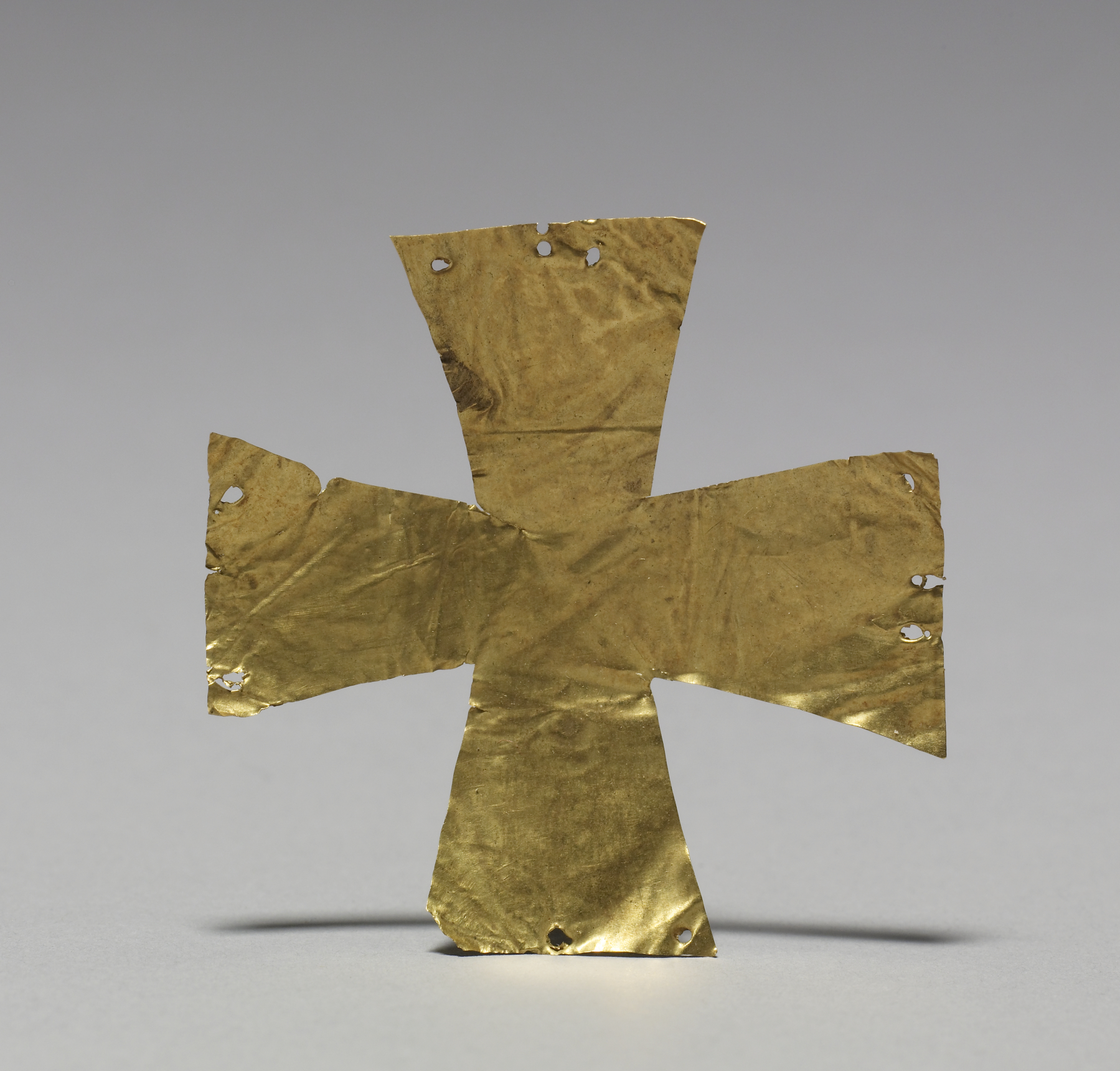Shroud Cross
(Medieval Europe )
Crosses cut from thin sheet gold are common finds from Langobardic graves in Italy. The three examples in the Walters collection (nos. 57.1771, 57.1772, and 57.1773) are said to have come from the same cemetery. Christianity was established among the Langobards by the 7th century. While the decoration on the gold crosses varies, the shape of the equal-armed (Greek) cross was preferred. Such crosses have been found primarily in burials of wealthy men, women and children are believed to have been used only for funerary purposes, the cross being sewn to the burial shroud.
Provenance
Provenance (from the French provenir, 'to come from/forth') is the chronology of the ownership, custody, or location of a historical object. Learn more about provenance at the Walters.
Morrin, New York [date and mode of acquisition unknown]; Charles Morley, New York, 1946; Mrs. Nelson Gutman, Baltimore, 1946; Walters Art Museum, 1946, by gift.
Exhibitions
| 1979-1980 | Jewelry - Ancient to Modern. The Walters Art Gallery, Baltimore. |
| 1947 | Early Christian and Byzantine Art. Baltimore Museum of Art, Baltimore. |
Geographies
Italy (Place of Origin)
Measurements
2 9/16 x 2 1/2 x 1/16 in. (6.5 x 6.3 x 0.1 cm)
Credit Line
Gift of Mrs. Nelson Gutman, 1946
Location in Museum
Centre Street: Third Floor: Migration and Early Medieval Art
Accession Number
In libraries, galleries, museums, and archives, an accession number is a unique identifier assigned to each object in the collection.
In libraries, galleries, museums, and archives, an accession number is a unique identifier assigned to each object in the collection.
57.1772


